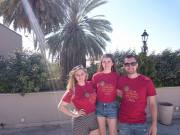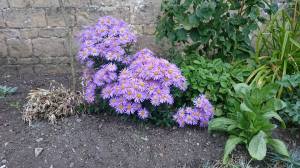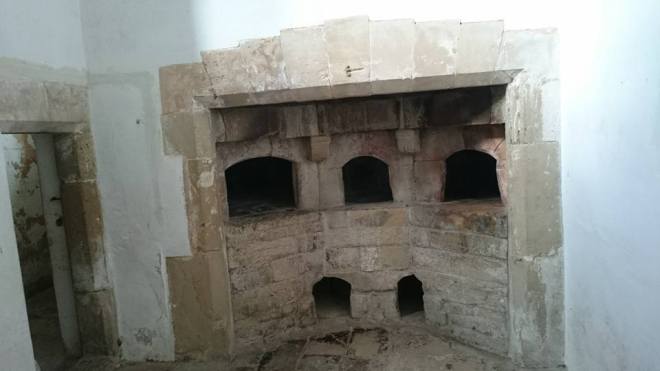Margaret Cavendish – Brief Essays and a Video Clip
INFORMATION PAGES for JAMES FITZMAURICE https://margaretcavendish.net/about/information-page-for-james-fitzmaurice/. Also James Fitzmaurice
MARGARET CAVENDISH AND VIRGINIA WOOLF VIDEO CLIP
Five minute video clip of “Cavendish, Woolf, and the Cypriot Goddess Natura,” a play performed for the Othello’s Isand Conference at the CVAR Museum in Nicosia on 7 April 2017. There is a link to the full video when the clip finishes.
The actors were students from the University of Sheffield and Sheffield Hallam University. The director was SHU Lecturer in Performance Dr Henry Bell. The video was shown at the International Margaret Cavendish Society meeting at Bates College in June of 2017. Script is at the open access Humanities Commons https://hcommons.org/ or from j.fitzmaurice@shef.ac.uk.
Margaret Cavendish, Virginia Woolf, and the Cypriot Goddess Natura
Programme Notes
During the middle years of the 17th century, Margaret Cavendish published poetry on scientific topics, plays that dealt with religion, and essays on philosophy. She also published a biography of her husband and her own autobiography. She was an extraordinary woman and a key figure among women intellectuals, including those who corresponded with the Dutch “virtuoso” scientist Sir Constantijn Huygens. Cavendish was sometimes an object of crude misogynistic jest while she lived, and 250 years later Virginia Woolf used an essay in the London Times (later reprinted in The Common Reader) to ridicule Cavendish’s literary production and marriage.
This play opens with two young women, a graduate student and a newly appointed museum curator, having coffee while speculating about Woolf’s understanding of and emotional involvement with Cavendish. Ridicule, yes, but also fascination. The two young women find themselves slowly being drawn into an imaginary exchange involving the two classic women writers as the café closes up for the evening.
The situation becomes increasingly strange when Woolf, herself, walks in and offers to talk about her writing practices. Before long, Cavendish joins the group, and then Huygens appears, bringing with him male perspectives and predilections. Huygens is followed by Beatrix Cusance, Duchess of Lorraine, who transforms the café into a salon, and by John Evelyn, the famous diarist. As the play closes, John’s wife, Mary (who does not approve of salon culture and who is a little upset), joins Margaret Cavendish for a discussion of the foibles of men.
Much silliness endemic to salons transpires but also a measure of serious consideration of modes of written discourse and of natural philosophy, or as one might say, the realm of the Cypriot goddess Natura.
NB – While this play is based for the most part on fact, many of the details are extrapolations or are simply imagined by the author.

Characters in Order of Appearance
Melissa – [Doubles with Elizabeth Chaplin and Mary Evelyn.] Entry-level museum curator specialising in Early Modern history. Interested in the ideas as well as the social circumstances of women intellectuals of the 17th century, including the thinking of Margaret Cavendish.] Emilie Philpott, University of Sheffield.
Male Barista – [Doubles with Constantijn Huygens.] A large, heavy-set man in his mid-40s. Tom Cable, University of Sheffield.
Female Barista – [Doubles with Virginia Woolf.] A slender woman of about the same age. Jessica Hakin, University of Sheffield.
Balthazar Café Customer – [Doubles with John Evelyn.] Appears briefly at the beginning of the play as part of the “atmosphere”. Jessica Brown, Sheffield Hallam University.
Joan – [Doubles with Beatrix Cusance.] Of slight build. PhD student in English working on Modernism and early 20th-century literature, in particular the writing of Virginia Woolf. Morgan Reilly, Sheffield Hallam University.
Margaret Cavendish – Early Modern woman writer, who was discovered by academia in the 1990s. Cavendish felt that God does not intercede in human affairs and that He leaves the ordering of the world to Nature, indeed, the Goddess Natura. Cavendish was from a family of wealthy commoners, but eventually became the Duchess of Newcastle. Lived in Antwerp during the Interregnum. Lucy Morehen, Sheffield Hallam University.
Virginia Woolf – [Doubles with Female Barista.] In addition to being recognized today as a major novelist and essayist of the 20th century, Woolf wrote that Cavendish was a “cucumber” choking out all the flowers in the garden of literature. Jessica Hakin, University of Sheffield.
Constantijn Huygens – [Doubles with Male Barista.] Philosopher and “virtuoso” Dutch scientist. Huygens maintained a large correspondence in several languages with socially prominent ladies. His letters to Margaret Cavendish have survived. Tom Cable, University of Sheffield.
Elizabeth Chaplain – [Doubles with Melissa.] Waiting lady and protégé to Margaret Cavendish. Emilie Philpott, University of Sheffield.
Beatrix de Cusance – [Doubles with Joan.] Beatrix, Duchess of Lorraine, established a fashionable salon near Brussels at Beersel Castle. Her husband had been married to another woman and had asked the Pope for an annulment. The Pope did not comply, so the second marriage, to Cusance, was considered bigamous by many and was something of a scandal. Probably knew Margaret Cavendish socially. Morgan Reilly, Sheffield Hallam University.
John Evelyn – [Doubles with the Café Customer.] Diarist, writer on various topics, and translator. Evelyn carried on a serious, but platonic relationship, with a much younger court lady. Knew Cavendish, with whom he exchanged gift copies of books. Jessica Brown, Sheffield Hallam University.
Mary Evelyn – [Doubles with Melissa.] Wife to John Evelyn. Mary thought that Cavendish was rude in speech and disliked John’s tendency to cultivate court beauties. Emilie Philpott, University of Sheffield.
Thanks for financial support to: The Alumni Association of the University of Sheffield, Sheffield Hallam University’s Department of Performance, and the Othello’s Island Conference. The Centre for Visual Arts and Research Museum provided acting space, and costumes were loaned by the English theatre group ACT as well as The Collective (vintage clothing shop, Palaion Patron Germanos 4-6, Nicosia 1010).

18. Margaret Cavendish on Odor: A Sweetly Scented Garden, the Smells of Food and Drink, and Several Stenches

John Evelyn in the preface to his translation of De La Quintinye’s The Compleat Gard’ner (1693) writes about the origins of gardens. Gardens, he suggests, developed from being purely useful to being aesthetically pleasing as human life became less bound by “necessities.”
“But in the Ages following, as soon as Men thought they had made a sufficient provision for their Necessities, and there begun to be establish’d among them, some distinction of Degrees and Fortunes; it happened that the Pleasures of the Sight and Smell, inspired some Persons with the Curiosity to gratifie them with Flowers agreeable to one or both of those Senses, and accordingly, they begun to gather together some of all those Beautiful Plants which they observ’d so curiously to enamel, and so admirably to perfume the Fields, where they were before confusedly dispersed.”
The 17th-century parterre garden at Ham House (pictured above, left) was reconstructed by the National Trust no doubt with both sight and smell in mind. The National Trust presents the garden as its owner Elizabeth, Duchess of Lauderdale, would have seen it in the late 17th century, a visual experience of regular lines and pleasantly mixed colors. There is, of course, a large kitchen garden on the other side of the house, but this, the private garden of Elizabeth, was to be used by her for solitary contemplation and chats with selected guests. When the lavender is in bloom, the scent must be striking.
Margaret Cavendish’s Lady Happy from the comedy The Convent of Pleasure (1668) orders a garden that is similar to Elizabeth’s at Ham House. Lady Happy’s general view is that house and garden should “not vex the senses but . . . please them” (Act 1, Scene 2). Lady Happy’s garden is to be filled with pots conaining orange trees (Act 2, Scene 2). The long terrace at Ham House, constructed a few years after the publication of Convent of Pleasure, is these days described by tour guides as a place that was adorned with potted orange trees.

Something about gardens filled with beautiful sights and enchanting smells seems to have tempted Cavendish to create in Nature’s Pictures (1656) an unusual narrative, one that involves a surprising twist. In a verse tale, a virtuous young lady tells of a beautiful woman who lies on the ground of a garden and smells the flowers but does not pick them. The other ladies in the garden do pick flowers as well as fruit. The ladies fill baskets with what they pick, but the beautiful woman, one might say, communes with nature in a way that would be understood by the English Romantic poets.
“But she, as if in Nature ’twere a Crime,
Was loath to crop their Stalks in their full prime.
But with her Face close to those Flowers lay,
That through her Nostrils those Sweets might find way.
Not for to rob them, for her head was full
Of Flow’ry Phansies, which her wit did pull,
And Posies made, the World for to present
With a more lasting and a sweeter scent.
But as she lay upon this pleasant Bank,
For which those Flowers did great Nature thank,
Death envious grew she such delight did take,
And with his Dart a deadly wound did make.” (1671 edition, pages 96 and 97)
Cavendish locates the beautiful woman in a garden rather than within nature as untouched by human hands — say a forest glade. But the beautiful woman’s garden is probably a “wilderness” like the one at Ham House (pictured above and to the right). A wilderness is much less ordered and markedly more “natural” than a parterre garden, but it is managed by gardeners. The beautiful woman’s death is unexpected, but what happens to her body after she has died adds a genuinely surprising twist to the narrative.
“The Airy Choristers [birds] hover’d above,
And sung her last sad Funeral-Song of Love.
The Earth grew proud, now having so much honour,
That Odoriferous Corpse lying upon her.
When that pure Virgin’s Stuff dissolv’d in Dew,
Was the first cause new Births of Flowers grew,
And added Sweets to those it did renew.
The Grosser Parts the Curious soon did take,
Of it transparent Purslain they did make:
Her Purer Dust they keep for to refine
Best Poets Verse and gild every Line.
And all Poetick Flames she did inspire,
So her Name lives in that Eternal Fire.” (1671 edition, pages 97 and 98)

“Odoriferous” undoubtedly means “sweet smelling.” Cavendish’s readers would have known of saints’ lives in which holy people who have died smell sweet rather than the reverse. Cavendish is no serious hagiographer, and, instead, plays with traditions of religious lore in startling ways that are reminiscent of John Donne’s poetry.
In an image that would have outraged Puritans and would have been found unsettling by others, the beautiful woman’s bones are transmuted into religious relics of a sort. The bones are used by the “curious,” that is the “skilful,” to make porcelain, which was valued for its translucency. Perhaps as surprising as anything to be found in Donne’s poetry is the oblique suggestion that the beautiful lady, in addition to returning to nature as her flesh becomes “dew,” is metamorphosed in her bones into a lovely piece of Chinese porcelain (see example, above and to the left). By the way, European porcelain had not yet been perfected, though in the 17th century the “curious” were hard at work experimenting with various materials. Josiah Wedgwood found success as an experimenter and wealth as a producer of English porcelain, but this is a tale of the 18th century.
This poem of a garden full of pleasant sights and smells thus ends with a surprising twist, or perhaps, set of twists, but it also takes a complicated stance regarding the problem of art and nature. The beautiful woman’s body is returned to nature where it helps to generate sweet-smelling flowers, but, as she was in life a poet, her “dust” becomes an aid and an ornament to be used by poets who live after her. The transitory existence of the lovely and perfumed flowers that grow from her, of course, contrasts with but is not subordinate to the permanence of the porcelain objet d’art. In short, both art and nature are given their due.

Cavendish also pays a good deal of attention to the smells of food and drink, generally speaking in her comic scenes. In The Religious (1662), a character describes two girls who are afflicted with green sickness. Rather than eating as others do,
“[one took] the greatest pleasure . . . to smell musty Bottels, and . . . another . . . took the like to smell old Shooes.” (Scene 24)
Cavendish is having a bit of fun here, but she writes a good deal about young women and had about her a set of waiting ladies. The waiting ladies, who are given some attention in Blog 16, do not generally succumb to green sickness in her writing. Rather, they can be quite irreverent as they converse among themselves about the marriage market and other matters. In The Unnatural Tragedy (1662), a group of such young women, called (perhaps ironically) the Sociable Virgins, agrees that they do not like reading Homer because of his descriptions of animal sacrifice.
1 Virgin.
“For my part I can read [Homer] at no time: for my stomack is always so weak, or at least nice, as the discourse of the large Thighs or Chines of Beef and Mutton, with their larded fat, suffocates my spirits, and makes me ready to swoun. For the discourse makes me imagine I smell the strong savour of the gross meats, and the drunken savour of wine.” (Act 2, Scene 13)
We living today might not expect to find young women of the 17th century discussing Classical authors, but Cavendish actually spent time reading with her waiting ladies, and she suggested at one point that such reading is a sort of useful work. A key word that the First Virgin uses is “nice,” and it is probably there to tip us off to her being character with a nice, that is, finicky, appetite.

That said, Cavendish really does dislike the smells of surfeit. In the first part of The Matrimonial Trouble (1662), a maid offers an extreme example when she describes how her mistress must share a room with a man who has been sick from drink.
1 MAid.
“I wonder my Lady is able to stay in the room with my Master. His vomiting hath so fumed the room, as there is such a stink that by my troth I am almost strangled with the smell of the corrupted drink.” (Act 4, Scene 34)
One does not need to become sick to the stomach to create stench, however. Lady Sanspareile in the second part of Youth’s Glory, Death’s Banquet (1662), brings up a favorite topic of Cavendish — loutish husbands who reek of alcohol.
“For if [a man] be a Drunkard, [a woman] had better be marryed to a Beast, her nostrils is stencht with the Lees of wine, her eyes are offended with his rude behaviour, and her ears are struck with a cursed noise of cursing and Oaths.” (Act 2, Scene 5)
It is interesting to compare Cavendish’s understanding of smells of food, drink, and overindulgence with what is to found in Netherlandish art. As a long-time resident of Antwerp and a friend of the art-dealing Duarte family, she would have been aware of kitchen scenes in prints (see above, right) and oil paintings. She also would have seen representations of drunkenness, especially in connection with peasant weddings (see above, left).
In the world of art historians, there is some disagreement about the importance of religious interpretation in such art — or the lack thereof. I doubt that Cavendish wanted to teach any moral or religious lessons. There are many places in her writing, however, where one can find warnings issued to women against marriage because it is difficult to know which men will be loutish once married. At the same time, loutishness can have a certain Rabelaisian appeal in literature and art, an appeal that is to be found here and there in Cavendish’s drama. For instance, Madam Passionate in Bell in Campo (1662) is a wealthy widow who is courted by two young fortune hunters, who must endure the “wind” that “rasps” out of her body if they are to have any chance of securing her fortune.

The tale of the beautiful lady whose bones become Chinese porcelain is, in all of its complexity, more typical of Cavendish than the story of the widow and her suitors, however. The fate of those bones, by the way, puts me in mind of Shakespeare’s Ariel singing about the supposed death of Ferdinand’s father in The Tempest:
“Full fathom five thy father lies,
Of his bones are coral made
Those are pearls that were his eyes.
Nothing of him that doth fade
But doth suffer a sea change
Into something rich and strange.”
In both Shakespeare and Cavendish, bone is transmuted into beautiful object. And in each case there is added complication. In Shakespeare’s play, Ferdinand’s father is not dead, and what the song says is untrue. In Cavendish’s Nature’s Pictures, the young lady who narrates the tale of transformation of the bones disappears from the frame of the tale, or, one might say, the frame itself disappears. The tale no longer seems to need a narrator, or perhaps the teller and the main character fuse into one.
Finally, in both Shakespeare and Cavendish, collectable pieces of art are foregrounded. Nearly all country houses of the 17th century contained both Chinese porcelain and hand-carved coral. Such is the case with the collections at Ham House, where examples of porcelain are currently on display.

17. Tombs, Groves, and Signification in the Writing of Margaret Cavendish and John Evelyn

In Margaret Cavendish’s tragi-comedy Bell in Campo (1662), Lady Jantil designs a tomb complex that is to be surrounded by a large grove. Jantil explains the meanings of the textiles in the three rooms that will make up her personal quarters and then goes on to say,
“Thus will I live a signification, not as a real substance but as a shaddow made betwixt life and death.” (Scene 21)

To what degree and in what manner, we might ask, did tombs and groves involve signification for people like Margaret Cavendish and John Evelyn? Lady Jantil, of course, is a character in a play, and her desire to live “as a signification” can be understood in several ways. Most obviously, the effigy that she creates of her husband, Seigneur Valoroso, points to his life as a valiant soldier. But in this sort of signification she is still corporeal herself in the capacity of an architectural designer. Her sense of her lack of substance, however, may simply be an adumbration of her impending death. As time goes on, she becomes less a creature of this world and ever more insubstantial. Eventually she disappears from life altogether. Valoroso’s effigy, by the way, is like that in the illustration to the right — a recumbent man in armor.
Men often were represented together with their wives atop tombs (see illustration below and to the left), and Lady Jantil may be suggesting, less obviously, that she will be a living effigy to accompany her husband’s which is carved in marble. That is, she will function less as a person of flesh and blood (“substance”) and more as a sign of one aspect of his life, his marriage to a worthy woman. In a third application of the word “signification,” one might say that Lady Jantil uses the decoration of her living quarters to point to her own life as a chaste and pious woman. The three rooms of her personal quarters will remind us of her scrupulous morality and of her piety. The hangings, she says, have meaning — white cloth for chastity, textiles with colors “intermixt” to signify contempt for the “varieties” of the world, and black material for her acceptance of death as the outcome of all human life.
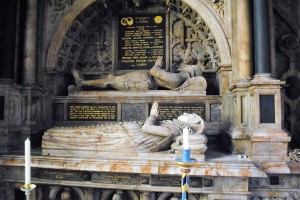
Aristocratic families of Cavendish’s time, however, did not bury their dead in tomb complexes. They buried them in churches. Further, I believe that Margaret Cavendish, unlike her character Lady Jantil, intends the grove burial of Seigneur Valoroso to carry a mostly associative meaning rather than signification.
In his diary entry for 29 January 1645, John Evelyn, a friend of Cavendish, describes a visit to what he takes to be the tomb of the Roman orator Cicero. Located on a mountainside near Gaeta in Italy, the path to the tomb is
“Beset with myrtles, lentiscuses, bays, pomegranates, and whole groves of orange trees, and most delicious shrubs.”
The tomb itself is situated in a grove of myrtles and the experience is hugely pleasurable.
“I shall never forget how exceedingly I was delighted with the sweetness of this passage, the sepulchre mixed among all sorts of verdure; besides being now come within sight of the noble city, Cajeta [Gaeta].”

Cavendish might have learned about Cicero’s tomb during conversations with Evelyn, but, if not, it is likely that she was familiar with the locale from talking with other travellers. Clearly Cicero’s burial place was a stop on the grand tour in 1820 (see illustration to the right) and probably long before. Travellers from England, as evidenced by Evelyn’s diary, also were taken to tombs purported to be of the Roman dramatist Plautus and a number of less-well-known figures including Valerius Volusi, tombs located in leafy environs.
The grove surrounding Jantil’s tomb complex is described thus:
“Lawrel, Mirtle, Cipress, and Olive . . . . this Tomb placed in the midst of a piece of ground of some ten or twenty Acres, which I would have incompassed about with a Wall of Brick of a reasonable height.”
While Jantil’s signification for her three rooms points clearly and directly to moral and pious meanings, Cavendish’s associative approach makes a fuzzy and indirect connection between the memory of Seigneur Valoroso and a classical world of tombs located amidst groves of Mediterranean trees.
In her collection of stories in verse and prose, Nature’s Pictures (1656), Cavendish tells the tale of two lovers who die tragically. The lady, who ends her life with a pistol shot to the heart, utters the following request.
Let no friends marble toms erect upon
Our graves, but set young myrtle trees thereon.
Those may in time a shady grove become,
Fit for sad lovers Walks, whose thoughts are dumb. (Nature’s Pictures, p. 45)

The lady also asks for her cheeks and those of her lover to be anointed with poplar sap and for each of the dead to be crowned with a cypress garland. Rather than a marble monument, she foresees an imaginary classical temple to Love that “may walk in moving-Brains.”
If Jantil says that she will exist outside of substance, Cavendish’s lady from Nature’s Pictures thinks that memory is a process dependent on the cerebral activity of living people — in this case the “sad lovers” who will walk in the grove. The quote in full:
Thus, though w’are dead, our Memory remains;
And, like a Ghost, may walk in moving-Brains;
And in each Head Love’s Altars for us build,
To sacrifice some Sighs, or Tears distill’d.
By writing about “moving-Brains,” Cavendish aligns herself with one sort of contemporary natural philosophy which maintained that all thought is contained in matter in motion. Her philosophy of mind has much in common with that of Thomas Hobbes, with whom she was acquainted through the Cavendish Circle.
Becoming quite specific, the lady from Nature’s Pictures foresees an imaginary temple to the god Eros. This temple will be created for use with its own kinds of sacrifices and ablutions. The imaginary temple, I expect, corresponds in a loose way to the actual temple of Venus that John Evelyn designed in the 1650s for the garden of his birthplace at Wotton House in Surrey. (The temple, now on the grounds of a hotel, is pictured at the top of this page.)
There can be no doubt that Evelyn was a very serious Christian, but, to my knowledge, he did not make clear and direct claims for moral or pious signification for the temple at Wotton House. Rather, like Cavendish, he hoped to create associative meaning. His temple and the surrounding garden evoke a generalized heritage claimed from Greece and Rome.
It may be that what I have called “fuzzy” associative meaning and have connected to Evelyn’s temple was well suited to the English nobility, which included a mix of Roman Catholics and members of the Church of England. (Evelyn probably would not have worried much about pleasing Puritans, though his temple would have been inoffensive where most of them were concerned.) The religious architecture of classical Greece and Rome, I think, was able to provde a broadly inclusive and richly irenic heritage of civility and domestic good order in the aftermath of brutal and chaotic civil wars.
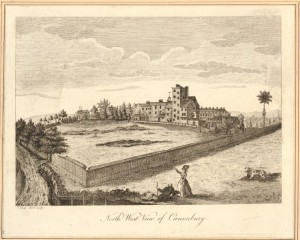
One feature of Lady Jantil’s grove remains to be explained or at least given some attention, the wall of “reasonable hight.” Jean de La Quintinie’s Compleat Gard’ner in John Evelyn’s translation of 1693 suggests that kitchen gardens have walls that are “pretty high” (vol 1, part 2, chapter 1). Such gardens have doors with locks and the walls are designed to discourage pilfering. Cavendish wants to make sure that Jantil’s wall is not understood to be of this sort.
Margaret Cavendish probably has in mind a wall intended to keep farm animals from straying into where they would be a nuisance, a structure perhaps waist high (see illustration above and to the right). Lady Jantil’s grove, then, is partly reminiscent of the English countryside, while the grove of the lady from Nature’s Pictures, which has no wall at all, is more thoroughly in the classical tradition — or at least that tradition as it was known to English travellers. Cavendish, as a long-time resident of Antwerp, would have encountered a steady stream of English people going to and coming back from Italy. Antwerp was definitely on the beaten path for the English venturing abroad.
My sense is that Margaret Cavendish does not entirely sympathize with Jantil as a character for several reasons. Most importantly, the tomb complex is too grandiose — especially when compared with the understated power of the lovers’ burial in Nature’s Pictures. The tomb complex also is cluttered, i.e., overly full of statuary and of paintings of Seigneur Valoroso. That said, Jantil is largely a sympathetic figure as a loyal widow. We modern readers probably do not mind Jantil’s small failings, because they allow her to become a believable human being.
A few final observations. 1) Evelyn labels his temple on the plan for his garden, “grotto.” Since the structure is built into the side of a hill, it is in that regard something of a cave, as grottos tend to be. The temple also makes use of water works. Be these features as they may, the building is otherwise instantly recognizable as a temple in its form. It is a temple with the features of a grotto rather than the other way around. 2) Cicero’s tomb, in the print, appears to include a high wall, though one that is thoroughly overgrown with vegetation. 3) Cavendish herself revelled in the variety of the world. One of her books carries the title The World’s Olio, which suggests a savory stew of mixed ingredients.

16. Margaret Cavendish and Hannah Woolley: Wine, Restoratives, and Gendered Drinking
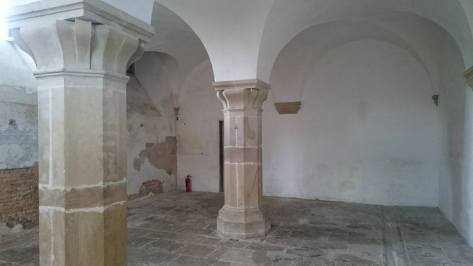
In the first part of Margaret Cavendish’s comedy The Wits’ Cabal (1662), four waiting ladies, Surfeit, Excess, Wanton, and Idle, discuss the ways in which men and women from the gentry drink. Men, these ladies say, drink in large gulps but women can become as inebriated by repeatedly sipping in small amounts. Mistress Excess sums up the situation thus.
“I love to be drunk by spoonfuls, for then I am drunk by degrees, and not at one draught, as a pinte, or a quart at a draught, as men do. Besides, though it be allowable for the sobrest noblest Women to be drunk with Wine-caudles, Sullybubs, Sack-possets, and the like, so it be by spoonfuls, yet it were abominable and most dishonourable for Women to be drunk with plain Wine.”
The waiting ladies would have been in their teens or twenties and these four wait upon Lady Pleasure, an aristocrat with whom they live while exploring opportunities for marriage at social events like balls and masques. Excess lets the audience for the play in on a more or less open secret — it was possible for women to become inebriated while drinking restoratives. The waiting ladies in Margaret’s plays often have a gently adversarial relationship with the older woman who looks after them, their matron. The matron is generally conservative while they are a little rebellious. In the second part of The Wit’s Cabal, a waiting lady relates a story that shows the differing practices of drinking that existed between the matron and her charges.
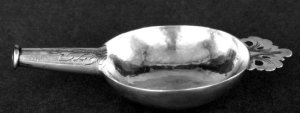
“Why Mother Matron had a spic’d pot of Ale in her hand. So she set it to her mouth, and drank a hearty draught of it, and, finding it very good and refreshing, drank another draught. ‘By my faith,’ said she, ‘This is a cheery cup indeed, and a comfortable drink,’ and with that drank another draught, and so long-winded she was, as she drank up all the Ale therein.”
The waiting ladies and Mother Matron are comic figures whose drinking habits say a great deal about their approaches to social class. Mother Matron might have come from the gentry, but she has little by way of aspiration to aristocratic manners. She is shown to be drinking like the famous Oxfordshire innkeeper Mother Louise, who is depicted in the print below and to the right. No spoonfuls of wine caudles for Mother Matron. Still, Mother Matron is forthright and open about her drinking, while the young women she supervises are given to a mild, though presumably common, form of aristocratic duplicity.

In a play within a play in Convent of Pleasure (1668), Margaret Cavendish demonstrates that her approach to drinking is not always purely comic. A group of waiting ladies in the framing play view a set of scenes in which alcohol-based abuse of wives by lower-class men is explored. An unnamed woman speaks to another in the following scene.
“I would to heaven my husband would run away with Goody Shred, the botcher’s wife, for he lies all day drinking in an ale house, like a drunken rogue as he is, and when he comes home he beats me all black and blue, when I and my children are almost starved for want.”
There is perhaps a bit of comedy in the woman wishing that her husband would run off with a clothes mender’s wife called Goody Shred, but the woman’s anger about being starved for lack of money reflects a serious problem, one echoed by a second woman. The two women decide to attack the men’s tavern, breaking its lattices (window shutters) — probably to applause from the stage audience and Cavendish’s family and household viewers. (I expect that the play was performed within one of the family homes — either Welbeck Abbey or Bolsover Castle.)
From a modern perspective, what is missing from the scenes is any criticism of upper-class men where alcohol is concerned. In the final scene, however, there is a threat by a young gentleman that he will take the woman he loves by force. She only saves herself by becoming a nun. This scene, though it does not involve alcohol, would have provided a sombre conclusion to the play within the play.
Excessive drinking among upper-class men is linked by Margaret in other plays to wenching and gambling. Wives are not physically abused but suffer emotionally as their husbands’ vices are attributed, according to gossip, to failings in themselves. It is a case of that horrible old understanding of marriage — if the husband is debauched, the wife must be to blame. The safest way for women, says Margaret in various places in her writing, is not to marry. If a woman does marry, she should take care to protect herself from possible exploitation, especially if she is a wealthy widow as is the case with Madam Passionate from Bell in Campo (part II, 1662).
“For this idle young fellow which I have married first seized on all my goods . . . and sells all my Lands of Inheritance, which I foolishly and fondly delivered by deed of gift, the first day I married, devesting my self of all power, which power had I kept in my own hands I might have been used better, whereas now when he comes home drunk, he swears and storms, and [ejects me] from my warm Bed . . . whilst my Maid takes my place.”
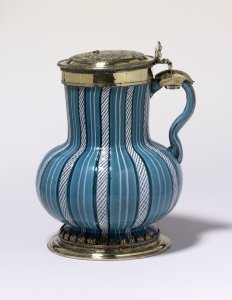
Cavendish uses a basically comic character, Lady Passionate, to make a serious point: women need to take care with legal documents when they decide to marry. Indeed, women and legal documents form key themes in the novella The Contract and the short story The “Matrimonial Agreement,” both printed in Nature’s Pictures (1656).
Margaret’s character Lady Wagtale offers the following recipe for a restorative to treat melancholia (i.e., depression) in the comedy Love’s Adventures (1662).
“If you are troubled with melancholly vapours arising from crude humours, you must take as soon as you wake after your first sleep a draught of Wormwood-wine. Then lye to sleep again, and then half an hour before you rise drink a draught of Jelly-broth, and, after you have been up an hour and half, eate a White-wine-caudle. Then a little before a dinner, take a Toste and Sack, and at your meals two or three good glasses of Clarret-wine.”
I am inclined to think that Margaret is engaging in a comic parody of her own advice concerning restoratives, advice that may be found in Sociable Letters. Lady Wagtale begins by recommending a reasonable sleeping aid but then adds in restorative after restorative, ending with the astonishing two or three glasses of claret per meal. Is Wagtale really recommending increasing amounts of alcohol for those suffering from melancholia?
I would say that she begins with genuine advice and ends in a joke based on gross exaggeration. I also would suggest that the dramatic situation may be a bit like what we find with Falstaff and Prince Hal in Shakespeare’s history play I Henry IV. Falstaff begins with a reasonable story of a fight and ends with a huge exaggeration. In each play, the dramatic effect is that individual members of the audience catch on to the exaggeration at differing points, but by the end of the scene the whole of the audience is laughing.
Hannah Woolley in The Queen-like Closet (1670) lists among her restoratives Number XXVII, “The Melancholy Water.” I have edited the entry for length, but suffice it to say that this recipe used to counter melancholia contains a great many petals from flowers.
“Take of the Flowers of Gilliflowers, four handfuls, Rosemary flowers three handfuls, Damask Rose leaves, Burrage and Bugloss fiowers . . . . two Nutmegs beaten, Anniseeds beaten, one ounce, three peniworth of Saffron; put them all into a Pottle [half gallon] of Sack [sherry] . . . . then distil them in an ordinary Still . . . . take of this Water three times in a week fasting, two spoonfuls at a time.”
Two spoonfuls, three times a week is unlikely to bring on intoxication, and it is doubtful that the women to whom Lady Wagtale speaks would want to endure the fasting involved in Woolley’s regimen.
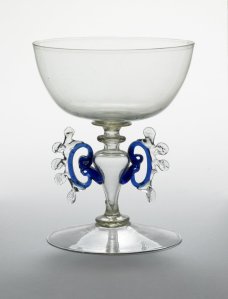
This is not to suggest that Hannah Woolley only wrote for people who were moderate drinkers. She includes four different recipies for surfeit — i.e., hangover — in The Accompolish’d Ladies Delight (1670) and the same number in The Queen-like Closet (1670). Surfeit, of course, is mentioned as the name of one of Cavendish’s characters (a waiting lady) in the first paragraph of this blog, and the word, itself, figures largely in her plays, though it often pertains to overeating rather than to excessive drinking.
Hannah Woolley presents her readers with literally dozens of recipes for such alcoholic restoratives as possets, syllabubs, and caudles. Indeed, the word wine appears in The Queen-like Closet 116 times, sack 47, claret 25, brandy 8, and ale 19. The conclusion to draw, I expect, is that cooking with wine and creating restorative drinks with wine and ale was commonplace. In some cases, the food or medicinal drink thereby created was not terribly intoxicating, as much of the alcohol would have been lost in cooking or boiling. In others, the alcohol content would have been quite high.
From Margaret Cavendish, we might learn that drinking, at the very least, was associated with certain male and female stereotypes of the upper classes. In working with these stereotypes for comic effect, she was much like other Restoration dramatists. Her serious look at physical abuse by men of women in the lower classes, on the other hand, is not likely to find a correlative in commercial theater of the time.
Three final observations: 1) It may be something of an irony that beer, such as was stored in the cellar at Bolsover Castle, contained very little alcohol and was drunk instead of water because drinking unboiled water was dangerous. These days, of course, beer tends to have a higher alcohol content. 2) Robert May mentions wine 648 times in the Accomplisht Cook (1660). Claret appears 190 times, sack 81, brandy 0, beer 24, and ale 14. 3) In the painting below that some say is of Margaret and her husband in the garden at the Rubens House, there is a very small depiction of a couple seated in the background, perhaps sharing a bottle of wine. The tiny pair, seen above the dog’s head and through the arch, suggests, at least to me, innocent pleasure in the context of drinking. The two are dressed like the principal figures in the painting. The presence of the dog tells us that Margaret and husband William (if it is she and he) are faithful to one another.

15. Margaret Cavendish and Hannah Woolley: Kitchen Work, Fancy Food, and Social Class
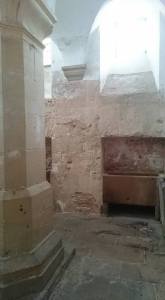
In Sociable Letters (1664), Margaret Cavendish wrote that she and her waiting ladies did not spend their time in
“Baking and Cooking-works, as making Cakes, Pyes, Puddings , and the like, all which I am ignorant of.” (Preface to the Marquis of Newcastle)
She goes on to say that she is as ignorant of cooking as of “Gaming, Dancing, and Revelling,” apparently suggesting that the culinary arts constitute a frivolous activity for aristocratic ladies.
I am always suspicious of Margaret when she seems to admit to ignorance, as in her repeated claim to not be able to speak French. Certainly, she has detailed knowledge of what went on in her kitchens, and she draws on it for the comedy The Matrimonial Trouble (1662). The steward Thrifty chides Bridget Greasy, a kitchen maid, in the following lines.
“Because you have not the profit of the Kitchin-stuff, you will never scrape the Dresser-board, nor Dripping-pans, nor lick the Platters, Trays, or Scummers, Frying-pans, Skillets, Gridirons, Spits, Ladles, Kettles, or any of the Kitchin-vessels, as you should doe, but wash them all with hot water at first, without taking off the grease beforehand.”
It appears that poor Bridget is berated for wasting grease as well as for being uneconomical with hot water. In the process of his small lecture, the steward Thrifty a employs a vivid metaphor in the verb “lick.” I certainly hope he does not expect her to actually lick the cutting boards, dishes, and such clean before she washes them in hot water. Bridget’s appearance takes us back to blog post 11, in which a version of greasy Joan from Love’s Labours Lost makes an appearance.

Hannah Woolley does not adhere to the comic stereotype that is found in Cavendish’s depiction of Bridget Greasy. Woolley, in a book that includes advice for women servants in great houses, tells kitchen staff to attend to personal hygiene and wear clean clothing — which staff are to launder themselves. For scullery maids like Bridget, she holds out hope for modest social advancement.
“You must wash and scowr all the plates and dishes that are used in the kitchin, likewise the dressers and cupboards, also all kettles, pots, pans, chamberpots, with all other iron, brass, tin, and pewter materials, that belong to the Chambers and Kitchin.
“You must wash your own Linen, keeping your self sweet and clean, remembring always, so soon as you have made an end of your dirty work, to wash and dress your self neatly, titely and cleanly.
“Now if you be careful and diligent, and cleanly in performing this place, you will have notice taken of you, and you will be advanced to a higher and more profitable employment.” (The Compleat Maid-Servant, 1677)
In Sociable Letters, a kitchen maid (discussed in blog post 11) ascends socially to become the lady of the house. However, Margaret is describing, again comically, an unusual turn of events much like what happened when a laundress named Nan Clarges married the famed Civil War general George Monck. Nan, so elevated, went on to become the Duchess of Albemarle. Hannah Woolley no doubt expects that the kitchen maid she describes would only advance within the ranks of servants.
Margaret includes a set of poems on how Nature orders human life in Poems and Fancies (1653). In “The Dissert,” for instance, the kisses of a newly establish couple are like marmalade and youth is like marzipan.
SWeet Marmalade of Kisses new gathered,
Preserv’d Children that are not Fathered:
Sugar of Beauty which melts away soon,
Marchpane of Youth, and Childish Macaroon.
Sugar Plum-words most sweet on the Lips,
And wafer Promises, which wast into Chips.
I especially like the preserved children who have no father. I expect that these children are foundlings of the orchard, cherries and peaches which cannot be connected to any particular tree or grove. There is, of course, a suggestion of actual illegitimate children. Margaret’s oldest brother was one of these, but completely accepted by the family.
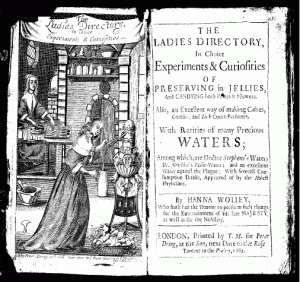
As Margaret’s poem may suggest, aristocratic ladies, and not just kitchen staff, took an active interest in preserving summer fruits. With the advent of cheap and readily available sugar, it made sense to keep ones’s abundance of berries and peaches from simply rotting away. At the same time, such wealth of fruit offered an opportunity to try out or create new recipes, as is implied in the title of Hannah Woolley’s The Ladies Directory in choice Experiments and Curiosities (1662).
The word “experiment” is still used today, often as a joke by amateur cooks to describe new culinary creations. The joke derives from the fact that what is created in modern kitchens is not normally what we think of scientific experiment. In Cavedish’s and Woolley’s day, however, an “experiment” in the kitchen might be simply a testing out of a new recipe. That said, herbs were often used medicinally and simples grown in gardens were compounded together, according to John Evelyn, in “laboratories” also found in gardens. William Cavendish, Margaret’s husband, apparently had some sort of laboratory in one of the niches in the garden wall at Bolsover Castle, though it was probably more oriented towards what we would call “hard science” than kitchen remedies. Evelyn, by the way, was perhaps a bit ahead of his time in suggesting, as he does, that kitchens should be kept well away from the main house.
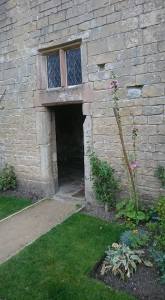
The following poem printed by Hannah Woolley as a preface to The Queen-like Closet (1670) extends the connection between cooking and medicine to include virtuoso science. A closet was a small room in which amateur scientists (virtuosos) kept oddities and curiosities — often a mish-mash of objects with genuine scientific importance and conversation pieces. Woolley’s title clearly attempts a connection to the highly successful Queen’s Closet Opened (1655), which purported to contain recipes from the dowager queen Henrietta Maria. Woolley knew how to situate her books for maximum sales, which is by no means to diminish these books themselves in any way.
LAdies, I do here present you
That which sure will well content you
A Queen-like Closet rich and brave;
Such not many Ladies have:
Or Cabinet in which doth set
Jems richer than in carcanet.
They only Eyes and Francies please,
These keep your Bodies in good ease.
They please the Taste, also the Eye.
Would I might be a stander by,
Yet rather I would wish to eat,
Since ’bout them I my Brains do beat.
And ’tis but Reason you may say,
If that I come within your way.
I sit here sad while you are merry,
Eating Dainties, drinking Perry.
But I’m content you should so feed,
So I may have to serve my need.
Margaret Cavendish also says that she “beats her brains,” which she does while engaged in writing and, I would guess, revision. In the company of the Dutch virtuoso scientist Constantijn Huygens, she conducted what may have been actual chemical experiments, and she was a woman who liked to create medicinal juleps. Still, Margaret was not a committed experimenter and preferred her science to derive from something like what Einstein called “thought experiments.” That is, work in the laboratory of the mind. I will confess that I am not quite sure how much time she spent cooking or supervising cooking, since her cooking references are so often either metaphorical or part of comic narratives.
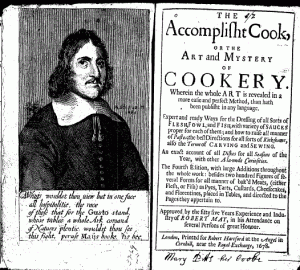
I will conclude this blog post with a consideration of two farcical fight scenes that involve food. In Letter 32 of Sociable Letters, a couple gives a dinner party but countermands each other’s orders to the cook. The husband asks the cook to deliver a “solid” English roast beef, but when it arrives the the wife cannot not abide its presence on the table because of its odor. In a bid to elevate herself socially, she demands that the beef be replaced with a fancy French “quelquechose.” Margaret tells us that the wife did not want to appear as a “country -Lady” but as a “courtier.” The narrator finds the ensuing battle, in which dishes are thrown back and forth, enormously amusing, and the story makes one wonder if this sort of thing happened very often in actual life.
The second fight is one that is recommended (or perhaps imagined) by Robert May in The Accomplisht Cook (1660). As prefatory matter for the book, he describes how a pastry sailing ship, a man of war, can be made.
“MAke the likeness of a Ship in pasteboard, with flags and streamers, the guns belonging to it of Kickses. Binde them about with pack thred, and cover them with course paste proportionable to the fashion of a Cannon with Carriages. Lay them in places convenient as you see them in Ships of War, with such holes and trains of powder that they may all take fire. Place your Ship firm in a great Charger. Then make a salt round about it, and stick therein egg-shells full of sweet water.”
May goes on to suggest (perhaps as part of a male fantasy) that the ladies present should pelt one another with with the egg shells.
“The Ladies take the egg shells full of sweet waters and throw them at each other. All dangers being seemed over, by this time you may suppose they will desire to see what is in the pies, where lifting first the lid off one pie, out skips some Frogs, which makes the Ladies to skip and shreek. Next after the other pie, whence comes out the Birds, who by a natural instinct flying at the light will put out the candles, so that what with the flying Birds and skipping Frogs, the one above, the other beneath, will cause much delight and pleasure to the whole company.”
I wonder if this kind of hilarity ever transpired or if it was thought up by May and printed in his preface to secure purchases from people browsing in booksellers’ stalls. The publication date of the volume does mark the beginning of the Restoration and the reign of the “merry monarch,” Charles II, so May, like Woolley, appears to have known how to fit in with current trends. By the way — the “Kickses” mentioned in the building of the pastry ship are probably “kickshaws,” which in turn derive their name from the word “quelquechose” — mentioned by Margaret in Sociable Letters. It does look like she knew a bit of French. Perry, mentioned in Woolley’s poem, was pear cider.
14. Margaret Cavendish and John Evelyn on Fountains and the Politics of Sport

In 1636, Queen Henrietta Maria, together with her husband Charles I, visited the Rock of Enstone in Oxfordshire. The object which gave its name to the place was a garden fountain shaped like a large stone and completely covered with plants. The fountain required a “fountaineer” to manipulate the valves on its many water pipes and was situated on an island. The island was reached by a foot bridge. According to Robert Pole writing in 1677, the Rock of Enstone was a place where people might come to marvel. It was not the first Italianate water feature to be built in Early Modern England, but it was one of the most striking.
The island of the rock was also a place of “sport,” according to Pole, because the fountaineer customarily sprayed his visitors with water in friendly jest. One may guess that the spray was not designed to soak and that the ladies and gentlemen who received it knew in advance what was in store for them if they crossed the bridge. There was also a grotto, where again a fountaineer was stationed to allow visitors to sport in spray . Although Pole only writes about adults, these waterworks are likely to put us in mind of that more recent fountain format — the set of water jets which erupt under the feet of delighted children in city squares and parks each summer.
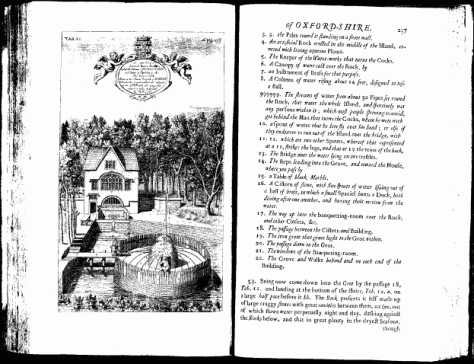
Henrietta Maria liked fountains and had two built at Denmark House in London, also in 1636. Perhaps the visit to Oxfordshire was inspired in part by her desire to observe fountain architecture, though there was also some business to be conducted between the owner of the fountain and Charles I. In any event, Margaret Cavendish, who later became a Maid of Honor to Henrietta Maria, would have known about the fountains at Denmark House and may have seen them during visits to London in the pre-war years.
“Sport” was a word with a political significance that was intensified by the reissue in 1633 of King James I’s Declaration of Sports. Many Puritans were enraged by the reappearance of this book and all felt strongly that Sundays should not be used for sports like leaping and vaulting, which are specifically authorized in its pages. So too dancing , which we may guess Puritans did not like much any day of the week. Margaret did not have a great deal of sympathy for this dour political and religious faction, and she writes in Sociable Letters (1664),
“I . . . . live in a calm Silence, wherein I have my Contemplations free from Disturbance, and my Mind lives in Peace, and my Thoughts in Pleasure . . . Sport and Play.” (Letter 29)
Margaret probably intended a parody on Puritan rhetoric, which stressed self-examination and thoughtful reflection. Her thoughts, in contrast to those of the Puritans, sport and play, even if she does not, herself, engage in physical activity by leaping or dancing.

At the same time, Margaret could be critical of “sport” when the word was used to describe amorous dalliance. She writes in Sociable Letters to warn about the dangers of this sort of thing.
“It is a temptation to an Husband to see two She-friends Imbrace, and Kiss and Sport and Play, which makes the Husband to desire to do the like, not with his Wife but his Wife’s Friend.” (Letter 23)
Nevertheless, Margaret does not condemn such kissing categorically and does not do more than allude in the passage to the nature of the dangers involved. I expect she found the priapic figures in the fountain at her husband’s holiday home Bolsover Castle comic in a silly sort of way rather than offensive (see below, right).
Margaret discusses fountains in a short paragraph on the arts of pleasure, which she contrasts with the arts of enticing in Nature’s Pictures (1656). By “arts” she seems to mean “skills,” so that the art of fountains probably involves design and construction.
“Arts of Pleasure are, Gardens, Groves, Bowers, Arbours, Grots, Fountains, Prospects, Landskips, Gilding, Painting, Sculpture: likewise, Musick of all sorts, Confectionary, Cookery, and Perfumes.”
The arts of enticing include
“Artificial Singing, Artificial Speaking, Artificial Dressing, Dancing, Powdring, Curling, Perfuming, Rich Clothing, Luxurious Entertainments.”
Enticing is by no means malicious, though she goes on to condemn skills which are. The ability to design perfumes, clearly, is different from knowing how to wear them. Following this pattern, we might guess that the fountain designer is possessed of a skill set different from that belonging to the fountaineer.
According to his diary, John Evelyn visited St Cloud, the country estate of the Archbishop of Paris, on 27 February 1644. There Evelyn found a statue of Laocoon in a fountain, a column of water delighting those who saw it by rising forty feet above their heads. The centerpiece of the garden, according to Evelyn, was a cascade, but there was also a grotto, “wherein are divers waterworks and contrivances to wet the spectators.” Evelyn does not explain why the spectators were showered with artificial rain by the fountaineer or examine their reactions, I suspect, because Evelyn was not one to enjoy this kind of activity.
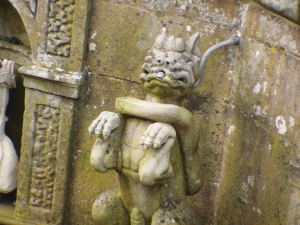
Still, it is likely that Evelyn would have found no fault with anyone who participated in these and other garden recreations. Of his visit to Cardinal Richelieu’s nearby château, he writes that the gardens are open to the public (i.e., the upper classes generally),
“to whom all access is freely permitted, so that you shall see some walks and retirements full of gallants and ladies . . . . in others, jolly citizens, some sitting or lying on the grass, others running and jumping; some playing at bowls and ball, others dancing and singing.” (28 March 1644)
While he is not fond of the excess he sees at Dutch festivals like kermis, Evelyn is not averse to active enjoyment of gardens.
A final meaning for the word “sport” involves the harming of animals for entertainment purposes. Evelyn writes on 16 June of 1670 about going
“with some friends to the Bear Garden, where was, cock-fighting, dog-fighting, bear and bull-baiting, it being a famous day for all these butcherly sports, or rather barbarous cruelties.”
Ladies are present and one finds a dog thrown into her lap even though she is high above the fighting. Evelyn’s final assessment is that he is
“most heartily weary of the rude and dirty pastime, which [he] had not seen . . . in twenty years before.”
Margaret Cavendish, of course, is well known for sympathizing with a hare and a stag in poems about hunting. She and Evelyn are definitely in accord in condemning the killing of animals as a form of entertainment. Interestingly, James I’s Declaration of Sports does forbid bear and bull bating on Sundays, apparently because James hoped to find a compromise in which Puritans would receive some Royal recognition of their views. It also may have been the case that this kind of sport inspired substantial public revulsion.

One does not normally associate bear bating with country estates, but the coursing of hares seems to have been usual. Evelyn in a diary entry of 20 July 1654, which describes Wilton (the estate of the Earl of Pembroke), writes as follows.
“We were entertained with a long course of a hare for near two miles in sight. Near this, is a pergola, or stand, built to view the sports.”
Evelyn offers no criticism of the coursing of hares, perhaps because he is so far removed from it or perhaps because such criticism would imply censure of Pembroke.
I will conclude this discussion of sport with a brief consideration of the most famous of all water fights in English literature, that which Sir Guyon witnesses as Book II of The Faerie Queene (1590) comes to an end. Two naked ladies contend in a fountain.
Sometimes the one would lift the other quite
Above the waters and then down again
Her plunge.
Sir Guyon has been sent to destroy the garden of temptation in which the ladies dwell, but he almost forgets himself. He needs to be reminded of his task by his helper, a palmer (for whom religion is paramount). When Guyon does destroy the garden, it is difficult to imagine that Spenser wholeheartedly approves, given the language in which the destruction is cast.
Their groves he felled, their gardens did deface,
Their arbors spoyle, their cabinets supresse,
Their banquet houses burn, their buildings raze
And of the fairest late, now made the foulest place.
Unlike Edmund Spenser, neither Margaret Cavendish nor John Evelyn associated gardens and garden architecture with irreligious behavior.

13. Royalist Politics, the Visual Arts, and Margaret Cavendish

The oil paintings of the Roman Emperors to be seen at Bolsover Castle these days are a reminder that art collecting was associated with the monarchy during the first half of the 17th century. King James I, himself a collector, was outdone by his son Charles I, who amassed what was probably Europe’s most valuable collection of painting, sculpture, drawings, prints, and objets d’art. The extravagant spending of Charles on the visual arts angered members of Parliament, especially the Puritans. The Puritans, of course, favored churches that were bare of statues and paintings. The Puritans, as a group, were not known for collecting secular art.
The Duke of Gonzaga, a powerful Italian nobleman, commissioned Titian, perhaps the premier painter of the Venetian school, to paint eleven Caesars, which, after Gonzaga’s death, were bought by Charles in the late 1620s. It is thought that the Caesars at Bolsover, which are copies, were acquired by Margaret’s future husband, William, a little thereafter. Margaret would have met with these paintings, probably at Welbeck Abbey, upon her return to England as the Restoration got under way.
Margaret compares Imperial Rome to the Roman Republic in Letter 187 from Sociable Letters (1664) when she writes of the death of the Roman statesman Cato the Younger:
“For he [Cato] perceiving his Country was like to be Govern’d as a Monarchy, which was before a Republick, Kill’d himself, although he knew the old Government was so Corrupted, as it caused great Riots, Tumults, Seditions, Factions, and Slaughters, Killing and Murdering even in the Market-place, so as it could not be Worse what Chance soever came, but was Probable a Change of Government might make it more Peaceable and Safe.”
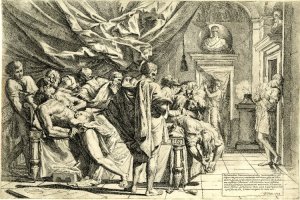
Margaret, we might say, was predisposed to look with favor on the the new Roman government because it bore similarities to the English monarchy, which, of course, recently had been restored when Sociable Letters was written. What is interesting here is that she is less than a strict Royalist in Letter 187. She does not suggest that monarchy is the only legitimate form of government. Rather, she asserts that change was needed because the Roman Republic was so corrupt.
Further, she feels that Cato, a supporter of the failed Republic, should have allowed himself to reach an accommodation with Julius Caesar. Instead, Cato committed suicide, which was a foolish but honorable act. Indeed, she ends the letter by calling him “honest Cato.” In the print, above and to the left, Cato is to be seen pulling his entrails from his body, a horrible part of the suicide described by Plutarch.
The situation is complicated by another print, which apparently links Cato to Julius Caesar with the thought that both were virtuous men. In this second print, the two men are recipients of fame bestowed them by Plutarch, and it is Plutarch who Margaret says she has been reading. The two elephants which draw the triumphal car of the personified Fame are led by Alexander the Great, who is followed by Julius Caesar. Plato, the Greek philosopher, and Cato walk behind Caesar and next to the car. Death is trampled by the elephants.

Cato, as a representative of republican government, is subordinated in the procession to Ceasar, the creator of single-person imperial rule in Rome, but Cato is not excluded from fame. Perhaps Cato along with the philsopher Plato are to be understood as men of thought rather than action. In any event, the two sorts of government are not visually shown to be in opposition to one another.
About a hundred years after the print with the elephants appeared in the Low Countries, a portrait of the great Dutch politician Cornilius de Witt is found accompanied by the statement that he was a Caesar in the field of battle and a Cato as a lawmaker. It would seem that, at least for the visual arts, representatives of monarchical and representative government could be found together. Modern scholarship tends to categorize English political thinkers of the 17th century as being committed to one sort of government or the other, but perhaps many looked to have the best of both.

In any event, I am inclined to see Cavendish not as an “absolutist” Royalist but rather as a pragmatist and a consensualist. She endorsed monarchy but only with conditions, and the governed had some say in the matter. Most surprisingly, she allows for a legitimate rebellion against an inept or corrupt government in her article on Brutus in World’s Olio, Book II, Part III (1655).
“Brutus was thought a greater Friend to the Commonwealth, than to Caesar; but I think him a Friend to neither; for the Envy to the present Government, or Governor, begot his desire of Change . . . . Had the [newly formed government under Julius Caesar] been at the worst, then a Change must needs have been for the better: but it was not so.”
This passage is strongly Royalist up until the last sentence, at which point the Royalist position becomes conditional. As a pragmatist, Cavendish allows that a bad government of any sort should be changed.
As a consensualist, she continues on to write:
“For if [the people] had liked better [the Republic], they would have followed Brutus. And that Government is to be approved best, that pleaseth most; for Government is for Safety, Peace, and Profit; and there is nothing keeps [a country] more in Peace, than Unity and Concord, and the Affections of the People to their Governors.”
By the way, two statues of Diana of Ephesus, associated with the Goddess Natura, are to be seen as if also marching in the procession of the elephants. Cavendish often invokes Nature as a goddess and would have liked this detail, had she seen the print. And she might have, given her years in the midst of the Antwerp art world.

12. Margaret Cavendish on Houses and Gardens, Love and Pleasure
During the Restoration, “pleasure” was a much-used word, one that prompted Cavendish to write about what was enjoyable as well as the reasoning behind religious asceticism. The Convent of Pleasure (1668) is the most read and most performed of her plays these days, partly because it deals with the perceived conflict between same-sex love and what is natural. Cavendish, who derived a great deal of her thinking from the Stoic philosophers, believed that the pursuit of pleasure was good and seeking pain foolish, but she wondered whether attraction involved in same-sex love was natural.

The Convent of Pleasure goes beyond offering mere hints of homoeroticism, such as are found in Shakespeare’s comedies, but, as with Shakespeare, the interesting questions of sex and gender in Convent remain unresolved. Lady Happy, the female protagonist, thinks that she is in love with another woman, while in fact she is in love with a man disguised as a woman –indeed a man who is a prince. It is during her time laboring under the misapprehension of sexual identity that Lady Happy delivers the famous and very affecting soliloquy that includes these lines:
Why may not I love a Woman with the same affection I could love a man?
No, no. Nature is Nature and still will be
The same she was from all Eternity. (IV.1)
After this speech has been completed, the Prince enters and the two lovers kiss as well as embrace. The Prince takes the opportunity to lighten the mood and offers a comic aside to the audience.
These, my embraces of a Femal kind
May be as fervent as a Masculine mind.

The audience is in on the joke about the disguise, but what about the notion of a “Masculine mind”? Cavendish was admired for being masculine in her wisdom in a letter written by the Dutch philosopher, Constintijn Huygens.
I should be loath to believe any Female Fear should reign amongst so much over-masculine Wisdom, as the World doth admire in you [Margaret].
By “over-masculine,” Huygens probably means “highly-masculine,” and he was not alone in thinking well of “masculine” women, though others (like Lord Denny) called them “monsters.”
If Cavendish leaves us with unanswered questions about the connections among same-sex love, pleasure, and nature when she concludes Convent of Pleasure, she is very clear that asceticism is foolhardy. Lady Happy sums up the play’s attitude nicely.
“Can any Rational Creature think or believe the gods take delight in [an] uneasy life [for humanity]? . . . .What profit or pleasure can it be to the gods to have Men or Women wear coarse Linen or rough Woollen or to flay their skin with Hair-cloth?” (I, 2)

What, then, does Cavendish unequivocally enjoy? What would she recommend as enjoyable to others? Enjoyment in Convent of Pleasure, unlike most other Restoration comedies, is associated with traditionally female activities, such as the decoration of living space inside and outside of a house. Cavendish’s views are outlined in a long speech by Lady Happy from which I quote a small part.
“For Pleasure and Delight . . . I have change of Furniture for my house according to the four seasons of the year . . . . as in Spring our Chambers are hung with Silk Damask . . . . And [in the summer] all the Floor strew’d every day with green rushes . . . . And in the winter Orange-Trees. . . . my gardens to be kept curiously and flourish in every season.” (II, 2)
My first impression of this speech, which goes on uninterrupted for two pages, was that it makes for bad drama by being too talky, but I now believe that it is a powerful statement that enjoyment and pleasure do not need to be libertine in a traditionally male way.

At the same time, there is a good deal of stress on sensual enjoyment in what Lady Happy says, especially on the sense of smell. Orange trees, John Evelyn writes, were grown indoors in the winter not for fruit but for the scent of their blossoms, and the aroma of freshly sprinkled rush mats in English country houses, as with Hardwick Hall (pictured above left), can be very pleasant even today.
This is not to say that there is no room for love, even love of a physical sort, in Cavendish’s world. The newly refurbished Venus Garden at Bolsover Castle, where she once lived, is perfectly suited for lovers, and there are niches in its large walls where ladies and gentlemen might meet and converse.
Finally, Cavendish sometimes likes to create threads within her narratives in which unorthodox sexual pleasure plays a part. In Nature’s Pictures (1656), for instance, there is a story in which a lady faints upon being told that her fiancé has married another woman. During the fainting spell, her soul descends to Elysium, and, upon recovering, the lady explains that she saw many lovers there including the Biblical Lot and his daughters about whom she says,
“Lot and his Daughters were more merrily disposed than the rest. I asked the reason and it was answered me that as they fell in love in the World, so they should there continue for ever.”
Cavendish, writing in the 1650s, finds Lot’s incest just a little comic. In the second edition of the book (1671), she removes Biblical characters from the story but keeps in a reference to Nero and his mother, who were thought by the Roman biographer Suetonius to have been lovers.
For Cavendish, Elysium is as the classical poets have described it:
“Dark as a shady Grove, or [bright] as the dawning of the Day, or like a sweet Summer’s Evening, when the Nightingale begins to sing.”
One might wonder why Cavendish places such a man as Nero in this beautiful and serene garden. I am inclined to think that for Cavendish Nero is more a character from fable than a depraved figure from history. I dare say she may have thought the same about Lot. A traditionalist Anglican in religion, she did not understand her traditions to be fact so much as the stuff of powerful narrative.
By the way — Not a lot of people really believed everything that Suetonius wrote, least of all Cavendish I would guess. Something of a sceptic regarding classical authors, she is known to have joked about reading “Plutarch’s Lies” (Sociable Letters, Letter 30).
11. Margaret Cavendish Writing About Servants
Margaret Cavendish tends to end her letters in Sociable Letters (published 1664) by writing, “Your faithful friend and servant.” The lady with whom she corresponds is fictional as is most of the content of the letters, but the closing is typical for communication among equals or near equals in the upper classes. Your offer of your service to others was partly pro forma and partly a genuine sign that you would help out if ever the need arose.
The relationship between mistress and those people who did the cooking and cleaning was, of course, different, but servants sometimes rose to have more power than one might expect. In Shakespeare’s Twelfth Night, Malvolio is a high-level servant who thinks he just might marry the lady of the house, but he ends up looking foolish instead.
Cavendish writes quite a bit about servants in their various gradations, including the lowest levels. Shakespeare ends Love’s Labour’s Lost with an image of a cook.
Then nightly sings the staring owl, “Tu-whit,
Tu-who,” a merry note,
While greasy Joan doth keel the pot.

That women cooks were greasy seems to have been proverbial and Cavendish, like Shakespeare, subscribes to the stereotype, if for no other reason than to have a little fun. “Keeling,” by the way, was not just “cooling” but might involve the skimming of animal fat from the surface of a boiling liquid. In Sociable Letters, Cavendish writes the following of a gentleman who marries his kitchen maid. First we learn that the kitchen maid catches grease as it flows off of cooking meat. Then we are given the wry conclusion to the tale.
“But though her Office and Birth were both Dripping and Basting, yet his Dignity and Wealth [i.e., from the marriage] hath made her a gay Lady; and so leaving him to his dish of Brewess, I rest, Madam, Your faithful Friend and Servant.” (Letter 42)
Cavendish is actually quite sympathetic to the couple, but with conditions. The gentleman’s parents are not living and he has no children from a previous marriage. What these circumstances mean is that he causes no embarrassment to anyone but himself, and if he doesn’t mind, then we should not. My guess is that Cavendish is alluding to another play by Shakespeare when she uses the word “dish.” Enobarbus has no doubt that Anthony will leave Octavia and return to his “Egyptian dish,” Cleopatra. The comparison between kitchen maid and Egyptian queen is extreme, and Cavendish is inviting us to join her in a laugh.
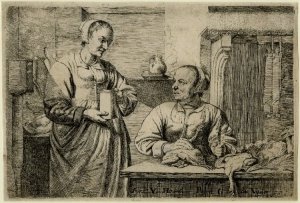
A more serious situation arises when a married man becomes romantically involved with servant, though even here Cavendish tends to see such relationships in their complexities. She sometimes lays a part of the blame for these liaisons on the ill-health of the wife, as in a story called “The Matrimonial Agreement” (found in Nature’s Pictures, 1656). That does not mean that she exonerates the husband. It is just that he is not a cardboard villain.
In The Unnatural Tragedy (1662), Cavendish lays the blame for a romance between a serving maid and a master squarely on Nan, the maid. Nan is simply a scheming woman, who steals the pliant husband. The wife’s rejection leads to her death through a sort of sadness, but Nan does not triumph. A member of a group of young ladies called the “sociable virgins,” marries the now-widowed husband and casts Nan “out at the gates.” Cavendish is not at all clear about the social positioning of the sociable virgins, though they seem to be waiting ladies (see blog 10 on carpets). Even with the not-so-nice sociable virgin, Cavendish gives us a bad person with interesting qualities. The sociable virgin, after she becomes the second wife, tells her new husband that he had better get rid of Nan or he might find himself less than perfectly healthy. The sociable virgin appears to know how to poison people. At the same time, she is happy for him to keep a mistress — just someone who is not a servant in what is now her house.
Cavendish writes quite a bit about relationships between female servants and masters of houses, mostly to describe the pain caused to wives. Her husband, William, seems to have had some sort of romantic entanglement with a serving girl during his first marriage and while his first wife was ill, but I doubt that Cavendish’s interest is mainly in her husband’s history. Rather, she saw around her too many wives whose household authority was undermined by pliant or callous husbands.

Cavendish was lifelong friends with Elizabeth Chaplain, apparently an upper-level servant who became her waiting lady. Elizabeth married an English merchant, Francis Topp, when she and Cavendish were living in Antwerp, but did not cease to be Cavendish’s friend, confidant, and perhaps agent with publishers. Cavendish addresses Elizabeth in a preface to the 1653 Poems, where a reply by Mrs Topp is also printed. It appears that the mistress (Cavendish) understood the servant (Elizabeth Topp) as a literary protégé.
All of this is not to say that Cavendish did not value social rank or think that the great bulk of servants should be happy in menial employment. Cavendish was a Royalist. Make no mistake about it. Still, she was self-aware and knew her own origins. Her father, while wealthy, had no title, a fact that she foregrounds in the first paragraph to her autobiography (“A True Relation,” printed with Nature’s Pictures in 1656). So too her husband, who rose with no inherited title to become Duke of Newcastle. Social class for Margaret Cavendish allowed for considerable movement — for some people.
More importantly, Cavendish felt that people of all sorts and shapes and kinds were fit material for poetry, fiction, drama, fictional letters, and so forth. In Sociable Letters (Letter 123), she admires Shakespeare for taking the same view. Shakespeare was faulted in the Restoration for creating too many lower-class and low-life characters. Cavendish writes of Shakespeare as follows.
“To Express Naturally [and] to the Life a Mean Country Wench as [accurately as] a Great Lady, a Courtesan as [accurately as] a Chaste Woman, a Mad man as [accurately as] a Man in his right Reason and Senses, a Drunkard as [accurately as] a Sober man, a Knave as [accurately as] an Honest man . . . it Expresses and Declares a [great] Wit.”
Cavendish was the first critic (man or woman) to discuss Shakespeare in depth and detail on the printed page. She was also one of the most perceptive.
